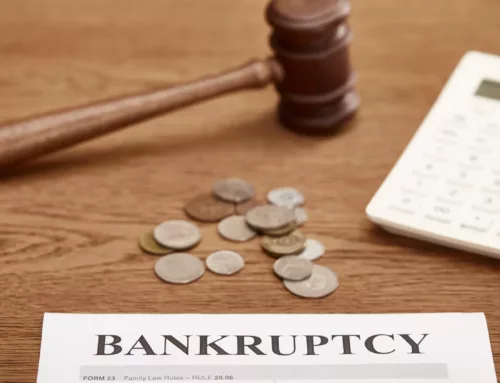At the end of a bankruptcy case, you have to option to reaffirm your debt, essentially agreeing to pay it if it would have been discharged. In this article, we’ll discuss secured debt and reaffirmation for Bankruptcy Chapter 7.
Chapter 7 Overview
A Chapter 7 Liquidation Bankruptcy is a reprieve for Americans who are drowning in debt and are receiving harassment from debt collectors. When you file bankruptcy, a court order known as an automatic stay prevents any further efforts by collection agencies to collect the amount owed. To qualify for this, you need to take the means test.
After the bankruptcy case is over, most debt will be wiped out (discharged) and you’ll no longer have personal liability. Some kinds of debt like child support or tax debt are exempt and cannot be discharged in bankruptcy.
While secured creditors can no longer sue you for the debt after bankruptcy, they still have a lien on the property that secured the debt. That means that even if you no longer have personal liability to repay the debt, the creditor can still repossess the collateral. A reaffirmation agreement may let you keep the property even after bankruptcy. Contact a bankruptcy attorney for more information.
Dealing With Secured Debt

Alternatively, a debtor can get into a reaffirmation agreement with the creditor. This means that they agree that the amount is still owed once bankruptcy has ended.
Reaffirmation contradicts the main purpose of bankruptcy. The bankruptcy process aims to provide debt relief by eliminating debts, which gives Americans a fresh start. It’s only ever used by debtors who want to stop foreclosure or repossession to keep a certain item. Bankruptcy law requires judges to scrutinize and approve these agreements. For more bankruptcy help, contact an expert in bankruptcy laws.
Pros and Cons of Reaffirming Debt
Before reaffirming a secured debt, consider the advantages and disadvantages.
Pros
- You can keep the property that secures the debt
- You are not required to pay one big lump-sum just to keep the property
Cons
- You are accountable to pay an amount that may otherwise be discharged debt.
- You can lose the property if the creditor decides to repossess it if you cannot make payments.
- You will have to wait 8 years after filing the initial Chapter 7 bankruptcy before you can file another one to wipe out this debt.
How Reaffirmation of Debt Works
Agreement of the terms of the reaffirmation happens in court. The two court forms to be filed are Form 240A and Form 27. If it’s a big creditor, they’ll usually be the ones handling the paperwork. They’ll simply ask you to sign the documents.
After filing, a judge will decide in a hearing on the approval of the reaffirmation. If the reaffirmation seems to be harmful to you or it will cause undue hardship, the court will disapprove of it.
The court will likely disapprove reaffirmation for the following reasons:
- the interest rate in the agreement is too high,
- the loan isn’t secured
- the property is worth significantly less than the balance of the loan you want to reaffirm
- you will not have enough money left after your living expenses to pay back the agreement
If you want to reaffirm your debt, talk to an expert attorney first. Our bankruptcy lawyers at Hammerschmidt Stickradt & Associates can help you examine all options available. Call us now at 248-600-4536 for a free initial consultation.



